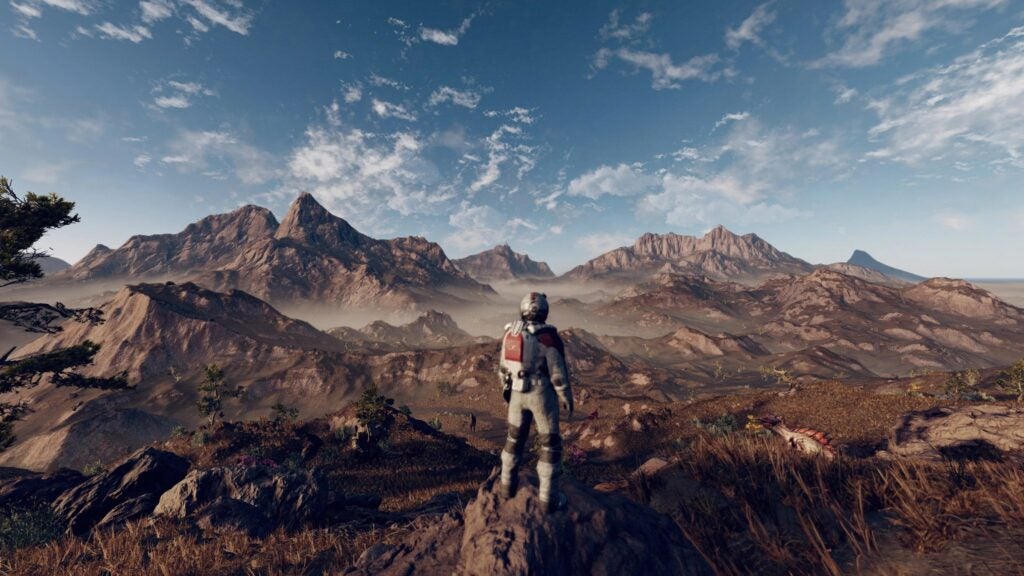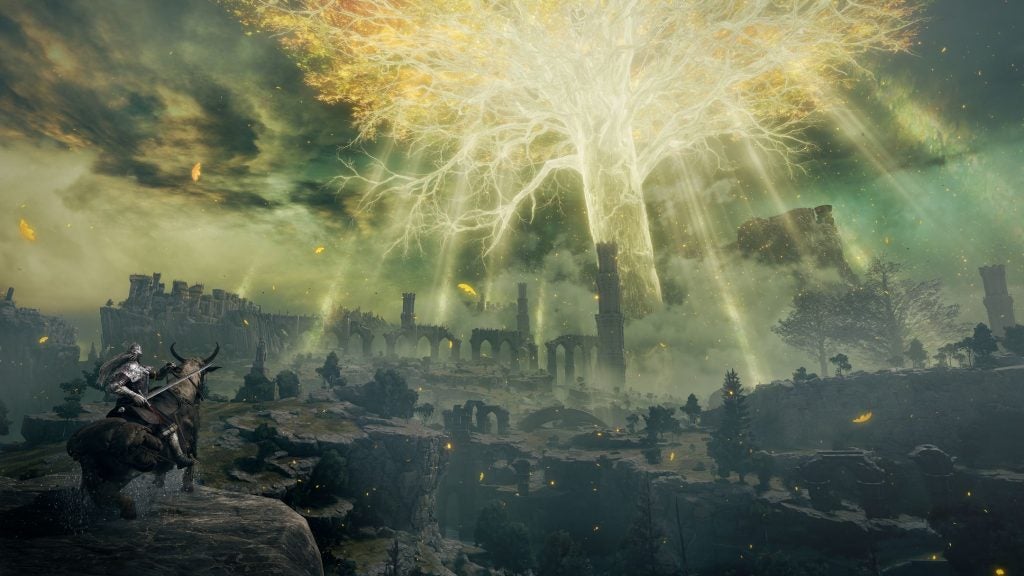OPINION: Everyone’s talking about Starfield this week, the latest RPG from Bethesda that swaps nuclear wastelands and fantasy realms for an adventure in outer space.
I had the pleasure of reviewing Starfield, and so I’ve been playing the sci-fi epic for the past couple of weeks, but while I was impressed with the expansive RPG systems and engaging side quests, I was really disappointed with the space exploration.
Exploring numerous star systems was one of the most hyped up features of Starfied ahead of launch, with the player able to visit over a thousand planets, many of which are randomly generated for each playthrough.

With such an enormous scale, the explorable universe of Starfield makes the maps of Skyrim and Fallout 4 feel tiny by comparison. To achieve this level of scale, without forcing developers to work ungodly hours, Bethesda has needed to make use of a technique called procedural generation.
Procedural generation uses an algorithm, and a series of metrics set by the game developer, to create in-game content when required. For Starfield, Bethesda has set a series of parameters to ensure as much variance in the planets as possible. There’s a sliding scale of planet terrain, gravity intensity, temperature, atmosphere, magnetosphere, water quality, available resources and quantity of lifeforms – if any at all.
By randomly generating all of these metrics, the algorithm is capable of creating a huge variety of planets for each playthrough, without Bethesda’s team of talented game developers having to manually design each of the 1000+ planets individually.

Procedural generation isn’t quite the same as artificial intelligence, as the latter makes use of machine learning to improve the algorithm over time. Yet, Julian Togelius, co-director of the NYU Game Innovation Lab, told Wired that he believes there are enough similarities to say that procedural generation is the same as generative AI – at least in terms of how it is used in game development.
When it comes to Starfield, procedural generation behaves the same way as artificial intelligence in that an algorithm creates explorable worlds rather than being handcrafted by a human. In theory, it makes sense to lean on procedural generation to create a universe of this magnitude, but I felt this had an unwelcome effect on my experience playing the game.
Planets created by procedural generation were extremely dull to explore. Yes, the planets looked different enough from each other but were all limited in terms of interactivity. Bethesda has smartly added random events that can occur on each planet, such as pirates taking over an abandoned space station, or a group of explorers becoming stranded and pleading for a ride. Such events however are recycled from planet to planet, which not only makes them increasingly boring to interact with, but also reduces the level of immersion.

By comparison, pre-designed planets such as Volii-Alpha and Akila are draped in more eye-catching sights, including heavily populated cities. The city of Neon was a personal favourite, with the Cyberpunk vibe, abundance of crime and bounty of story-led side quests making the world feel real and hugely entertaining. It’s not possible to create this level of detail using procedural generation.
Bethesda will likely argue that it’s only used procedural generation for planets devoid of intelligent life, and so the same level of immersion just isn’t required, but I’d argue that in the hands of a designer, it’s still possible to make the wilderness an exciting place to explore. Recent games such as Elden Ring and The Legend of Zelda: Tears of the Kingdom are prime examples of this, with highly detailed locations with plenty of secrets just waiting to be found, not to mention environmental storytelling also adding further background and lore.

That’s not to say that AI or procedural generation shouldn’t be used in game development at all – it would be naive to suggest that any of your favourite games from the last decade haven’t used some form of the technology to ease workloads. Minecraft is a prime example of a game that leans heavily on procedurally generated worlds to create unique locations for each player, yet offers enough interactive elements (830 types of blocks and 1404 unique items) to ensure the sandbox is still a thoroughly enjoyable place to play in.
I believe that a careful balance of both hand-crafted and AI-generated gameplay is required going forward. Having 1000 explorable planets may be a good way of creating an overwhelming galaxy for you to explore, but it arguably dilutes the quality of work that Bethesda has implemented with great care elsewhere.
I’d have personally preferred it if Bethesda had reduced the number of explorable planets from 1000 to just 10 if it meant that these alien worlds offered more interactive elements. Starfield may be far larger than Skyrim, but the latter is far more enjoyable to experience. No matter where you travel to in the fantasy world, you’re only moments away from a unique side quest, dungeon or settlement – that’s not the case with Starfield, to its detriment.
Starfield won’t be the last game to lean heavily on algorithms in order to increase the scale of available content. Just this year, Nvidia Ace for Games was announced, which will allow game developers to make use of AI technology to create spontaneous and unique speech for NPCs that doesn’t need to be pre-written beforehand.
This could be extremely useful for developers who want to increase the variety of in-game conversations with the characters that populate their digital worlds, but rely on it too heavily and games may encounter a similar issue to Starfield where there’s a greater focus on quantity rather than quality.
As clever as artificial intelligence is, it’s never going to match the creativity of a talented writer or designer.











